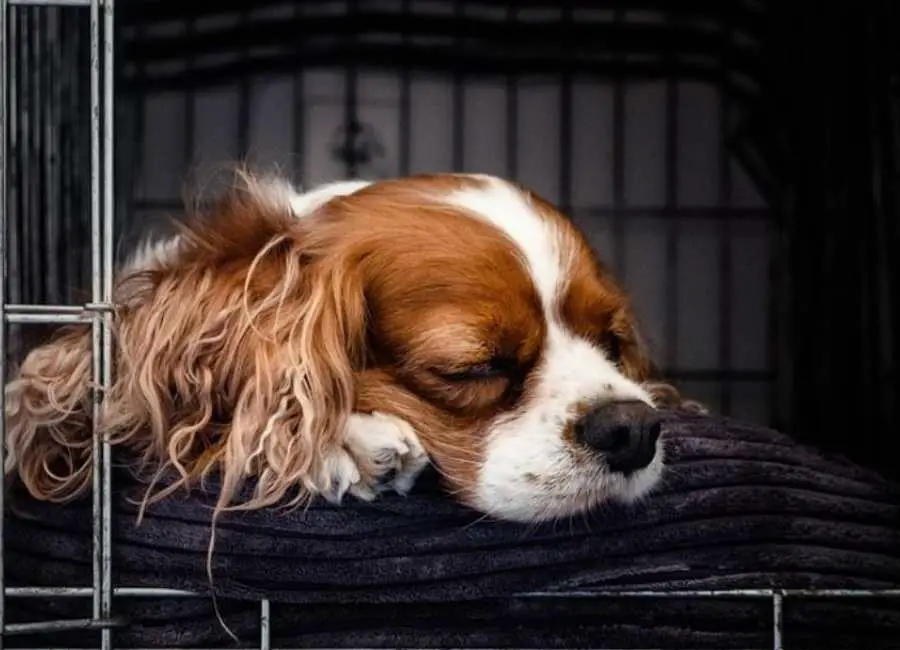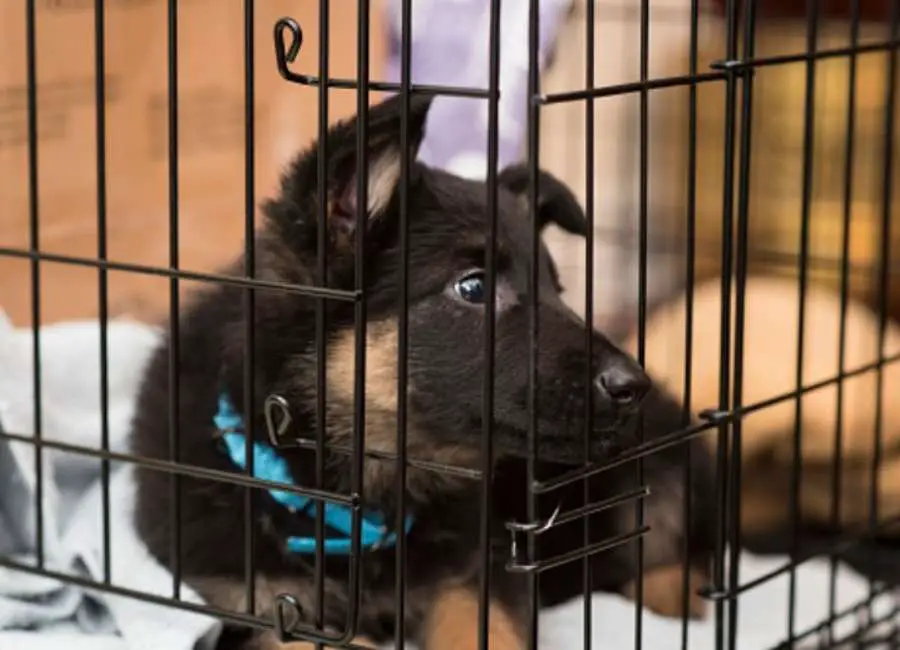10 Tips On Ways To Stop Puppy Crying In Crate

This post will address different ways to stop puppy crying in crate so keep reading to find out more.
How to stop puppies from crying in its crate can be one of the most difficult aspects of raising a puppy, which can be both gratifying and difficult.
For pups, crying comes naturally and instinctively, yet it may rapidly turn into a nuisance.
Fortunately, there are a number of techniques you can do to make your puppy more at ease in their crate and stop them from weeping while you aren’t around.
Ways To Stop Puppy Crying In Crate
Here are some common ways to stop puppy crying in their crate:
1. Gradually acclimate the puppy to the crate
Before locking the puppy in the crate for extended amounts of time, start by gradually introducing it to them.
This will give the puppy the time to investigate and become familiar with the crate.
2. Make Sure the Crate is the Right Size
Puppies should not be restricted in their ability to stand up, stretch out, or walk about.
A puppy may cry if its kennel is too tiny since it will make them feel confined.
3. Crate the puppy at regular intervals
Even for brief periods of time, limiting the puppy to the crate on a regular basis might help them become used to it.
4. Avoid leaving the puppy in the crate for too long
Puppies may need to go outdoors to the bathroom more frequently because of their small bladders.
You must frequently remove the puppy from the crate to prevent accidents.
5. Ignore unnecessary crying
When a puppy cries, it might be alluring to respond by letting them out of the kennel, but it’s crucial to hold back.
This could encourage them to weep in order to acquire what they desire.
6. Play Music or the TV
To help block out any outside noises or distractions that could be making them scream, you can play some calming music or leave the TV on in the background.
7. Exercise Before Putting the Puppy in the Crate
Take your puppy for a walk or play with them in the backyard before you put them in the cage to let them burn off some energy.
This could help keep them calm and at peace while they are in the box. A puppy that is exhausted is more likely to sleep peacefully in the kennel.
8. Give Rewards for Good Behavior
Treats and praise should be given to your puppy each time they spend time in the crate without whining or barking.
This will reassure them that their good behavior is valued and motivate them to remain more composed within their box.
9. Blankets and Towels Around the Crate
It might help to create a den-like environment and give them a sense of security by scattering a few blankets or towels around the crate.
For the puppy’s comfort, a crate cover may make the crate feel cozier and more like a cave.
10. Stay Calm and Consider using a calming pheromone spray
It’s crucial to remain calm while you place the puppy in its kennel.
If you get annoyed or angry with them for crying, it will simply make them feel more anxious and make it harder for them to settle in.
Some individuals have discovered that spraying a soothing pheromone in a puppy’s kennel will assist lessen the puppy’s nervousness and weeping.
Puppy crate training tips

Here are some common puppy crate training tips:
- Supervise your puppy when they’re out of the crate: Keep an eye on your puppy when they are out of the crate and look for signals of potty need, including circling, sniffing, or crouching.
- Don’t leave your puppy in the crate for too long: Puppies can’t contain their bladders for lengthy periods of time since they have tiny bladders. Puppies can typically retain their bladder for one hour every month of age. Therefore, a dog who is three months old can go around three hours without going potty.
- Crate your puppy at night: Your dog will find it simpler to fall asleep in the kennel if they are exhausted. Before going to bed, put them in the crate, and be sure to let them out so they may use the restroom.
- Use positive reinforcement: Give your dog lots of praise and goodies as they enter the crate. Avoid punishing your dog for being in the crate or berating it for doing so.
- Introduce the crate gradually: The living room or kitchen are good places to start because you spend a lot of time there. Encourage your dog to independently explore the kennel by leaving the door open. Additionally, you may place gifts inside the crate to entice the animal inside.
- Choose the right crate: Your puppy should be able to stand up, turn around, and lay comfortably inside the crate. Additionally, it must be strong and have a reliable latch.
- Gradually increase the amount of time your puppy spends in the crate: Start with short periods of time (a few minutes) and gradually increase the duration over the course of a few days or weeks.
Crate training can be a fun and rewarding experience for you and your puppy if you use these techniques to help them feel secure and at ease in their crate.
Learn more about the 9 Most Common Dog Training Mistakes.
Conclusion
It’s important to keep in mind that crate training may need time and patience.
It’s common for puppies to cry or howl when they are initially placed in a crate, but with persistent training and positive reinforcement, they should eventually become accustomed to it.
By learning the most effective ways to stop puppies from crying in their crate, you and your puppy can enjoy a more peaceful household and a better relationship.
It might be beneficial to seek further guidance from a veterinarian or a certified dog trainer if you’re still having problems with crate training.
